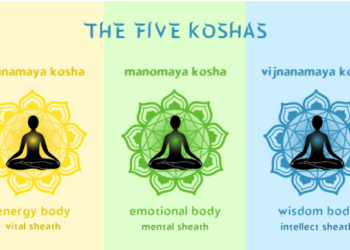Understanding Namaskara in Sanatana Dharma
Namaskara, a fundamental aspect of Sanatana Dharma (often known as Hinduism), is a profound act of respect, salutation, and veneration. It is an expression of reverence often directed towards deities, gurus, elders, or any entity deemed superior in knowledge or spiritual stature. This reverence can be conveyed both physically and verbally.
The Sanskrit term ‘Namaskara’ derives from ‘Namah’, translating to ‘bow’, ‘obeisance’, ‘reverential salutation’ or ‘adoration’, and ‘kara’, meaning ‘do’. Hence, ‘Namaskara’ essentially implies ‘I do obeisance’ or ‘I bow’.
In Sanatana Dharma, the act of prostration before God, known as ‘Shashtanga Namaskara’, forms an integral part of worship. It signifies humility, allowing the devotee to relinquish their ego and connect with the divine. This practice also embodies the understanding that God resides within us. By bowing down, we recognize and acknowledge the divine presence within ourselves and others. It amplifies the underlying unity of all beings, thereby fostering mutual respect and love.
Forms of Namaskara and Their Significance
There are several forms of Namaskara in Sanatana Dharma, each with its unique connotations and significance. These vary based on regional practices, lineages, or sects.
- Anjali Mudra or Pranamasana: The simplest form of Namaskara where hands are pressed together near the heart. It symbolizes the merging of the two halves of our existence and is believed to stimulate the flow of pranic energy, enhancing inner peace.
- Shashtanga Namaskara: A full prostration where the devotee lays flat on the ground, touching the earth with eight parts of their body: forehead, chest, two hands, two knees, and two feet. It symbolizes complete surrender to the divine.
- Dandavat Namaskara: A prostration performed by stretching the body like a stick with hands stretched overhead touching the ground. It’s an expression of absolute surrender.
- Panchanga Namaskara: Here, five body parts touch the ground: the two legs (knees), two arms (hands), and the head. This gesture indicates respect and admiration.
- Abhinandana or Abhivadana: A salutation usually reserved for elders, teachers, or persons of higher spiritual or social status. It involves stating one’s name, lineage, ‘gotra’ and ‘pravara’, and ends with an expression of reverence.
- Ashtanga Namaskara: A pose where only eight parts of the body touch the ground: two hands, two knees, two feet, chest, and chin. This is part of the Sun Salutation (Surya Namaskara) sequence in yoga traditions.
- Sashtanga Namaskara: In this form, the devotee touches the ground with six parts of their body: forehead, chest, two hands, and two knees. This is a variation of the Shashtanga Namaskara where feet don’t touch the ground.
- Uttana Prasara Namaskara: The devotee stands straight, then bends forward until the palms touch the ground, the body parallel to the ground. It’s a humbling posture symbolizing surrender and deference to the divine.
- Padottana Namaskara: In this form, the devotee falls on their knees and then forward until their forehead touches the ground, with arms stretched forward on the ground. This is a powerful symbol of submission and surrender to the divine.
- Kumbhaka Namaskara: This is a pose where the devotee lies flat on the ground on their stomach, arms folded with hands holding opposite shoulders. This gesture symbolizes respect, humility, and deference.
- Mundana Namaskara: The devotee prostrates completely, with their arms crossed behind their back. This represents complete submission to the divine and the dissolution of the ego.
- Atmanjali Namaskara: The gesture involves placing the palms together in a prayer position at the heart center. It’s a symbol of respect, offering, or salutation, often used in yoga and meditation.
The various forms of Namaskara in Sanatana Dharma are not merely physical prostrations but are deeply imbued with spiritual and philosophical significance. They enable a believer to express respect, demonstrate humility, and connect with the divine presence within all beings. By incorporating these practices into their spiritual discipline, devotees enhance their sense of inner peace, mutual respect, and unity, upholding the central tenets of Sanatana Dharma.








